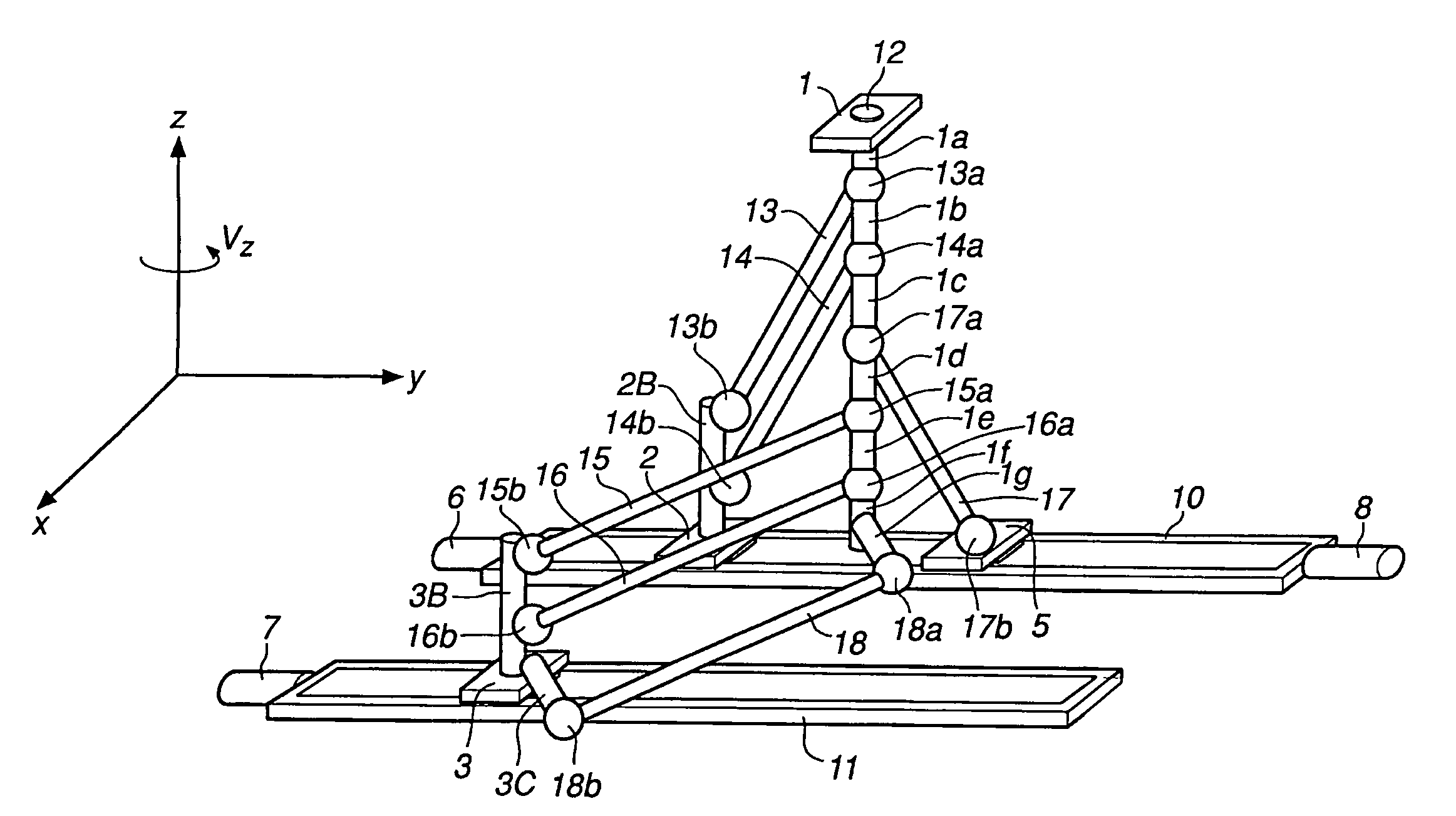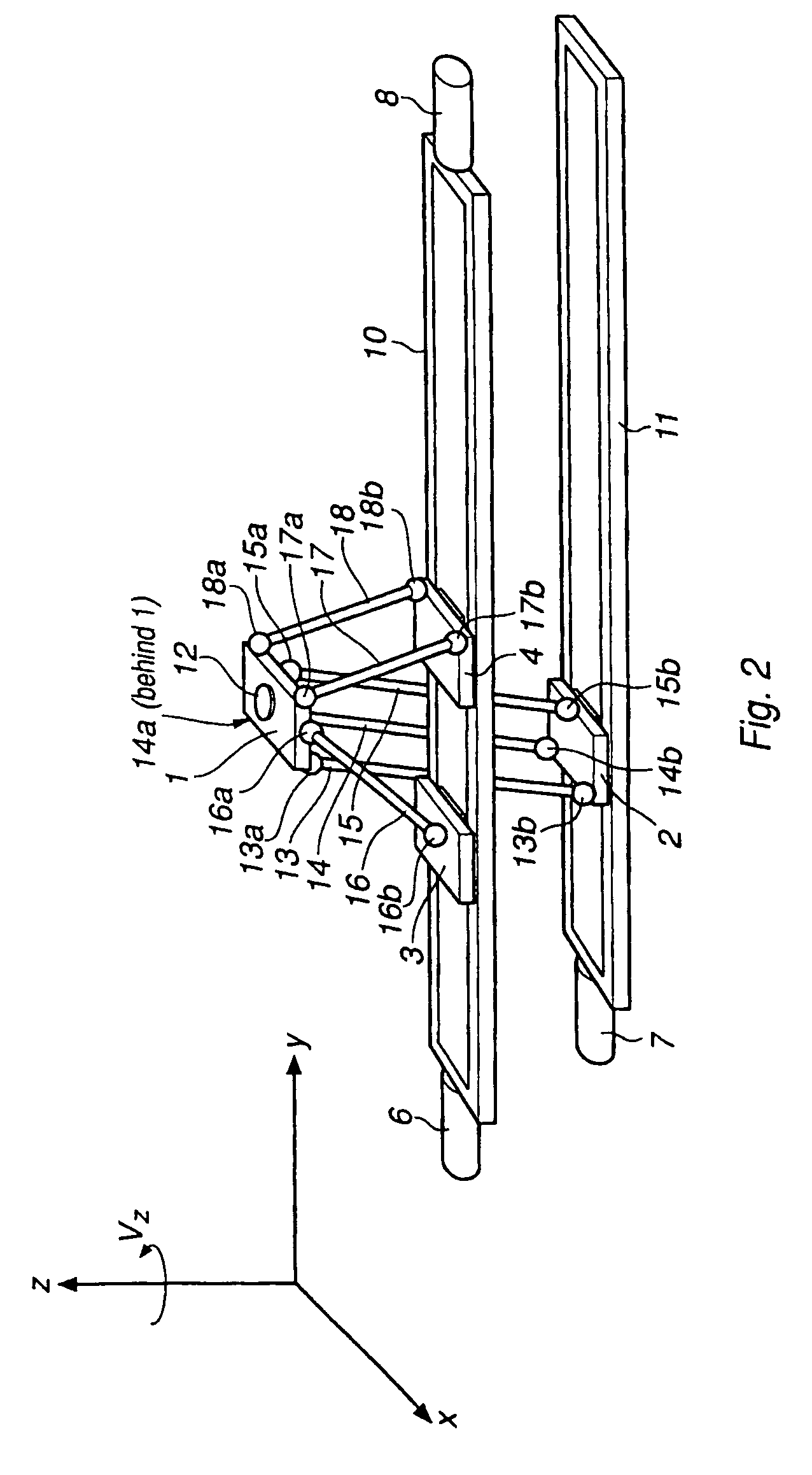Industrial robot
a robot and industrial technology, applied in the direction of arms, manufacturing tools, gears, etc., can solve the problems of limited action speed, poor reliability of gantry manipulators, and need of expensive and energy-consuming actuators (motors), and achieve the effect of high precision and easy manufacturing
- Summary
- Abstract
- Description
- Claims
- Application Information
AI Technical Summary
Benefits of technology
Problems solved by technology
Method used
Image
Examples
Embodiment Construction
[0054]FIG. 1 shows the prior art for manipulating, on linear paths 10, 11 and 25, a platform 1 by means of links 13–18, which only transmit compressive and tensile stresses. The six links 13–18 are provided at each end with joints 13a–18a and 13b–16b, respectively. The joints have two or three degrees of freedom and the links are mounted, via the joints 13a–18a, on the platform 1 that is to be manipulated. With the joints 13b–18b, the links are mounted on the movable units 2, 3, 4, 5, 26, 27 with one link for each movable unit. The movable units are controlled by actuators 6, 7, 8, 9, 29 and 28 and may be positioned along the linear paths 10, 11, 25 independently of each other. By performing this positioning in a certain pattern given by the kinematics of the manipulator, the platform may be caused to move in the x-, y-and z-directions and to obtain rotations around the z-axis(Vz). It is also possible to obtain rotations around the x-and y-axes, but there is no need for that in most...
PUM
 Login to View More
Login to View More Abstract
Description
Claims
Application Information
 Login to View More
Login to View More - R&D
- Intellectual Property
- Life Sciences
- Materials
- Tech Scout
- Unparalleled Data Quality
- Higher Quality Content
- 60% Fewer Hallucinations
Browse by: Latest US Patents, China's latest patents, Technical Efficacy Thesaurus, Application Domain, Technology Topic, Popular Technical Reports.
© 2025 PatSnap. All rights reserved.Legal|Privacy policy|Modern Slavery Act Transparency Statement|Sitemap|About US| Contact US: help@patsnap.com



